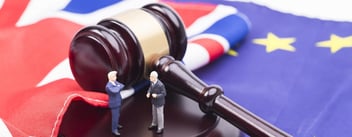In Sweden, the pavement cafés are buzzing and everyone can go and get their hair cut. The Dutch will still have to wait some time before this is possible, but everyday life has hardly changed for the Swedes since the corona outbreak. The recovery of the Swedish krona demonstrates that foreign exchange markets have confidence in the country’s strategy.
The Dutch population will need to remain patient for a while. That was the message conveyed last Tuesday by Prime Minister Mark Rutte, who announced that most of the measures currently in place with regard to the pandemic have been extended until 20 May. There is, however, a small ray of hope for working parents: the schools will be partially reopened after the May holidays. Meanwhile, schools and childcare centres are already open in Denmark, while neighbouring Germany is still keeping many shops closed. Each country is charting its own course. For the time being, Sweden – with a highly idiosyncratic approach – is the most extreme example of this. While more than half the European population is forced to stay at home, the Swedes are basking in the spring sun at busy pavement cafés.
Strict rules or trust?
Instead of imposing strict rules, Swedish Prime Minister Stefan Löfven has confidence in his fellow countrymen and women’s discipline in terms of maintaining a safe distance from one another. That provokes all kinds of different reactions. Neighbouring countries such as Denmark are predicting a catastrophe for Sweden, but the Swedes themselves are very happy with the strategy: the popularity of Löfven has skyrocketed in recent weeks. But what do the figures reveal? Nearly 2,000 Swedes have died of COVID-19 in recent months. It is true that this is more than in Norway and Denmark, for example, but the fact remains that the virus has claimed considerably fewer victims in Sweden than in Italy, Spain or Great Britain.
€60 billion damage for the Netherlands
If the Swedish approach works, the economic damage suffered by this country will be a lot less than in the rest of Europe. The International Monetary Fund (IMF) predicts that the Dutch economy will shrink by 7.5% in 2020, for example. This is a setback of 60 billion euros, and it would have been even greater had the Dutch economy experienced the slight growth that was forecast for the current year prior to the corona outbreak. And Sweden? Chief epidemiologist Anders Tegnell predicts that the country will manage to achieve herd immunity within a few weeks. In that case, the government’s baseline scenario is that the economy will have shrunk by 4% this year in comparison to 2019, but that the damage will be quickly restored. Whether it succeeds depends entirely on whether the corona approach is really as effective as recent figures would suggest.
Benefit of the doubt
The foreign exchange markets have an increasing tendency to give Sweden the benefit of the doubt. In mid-March, the krona fell by more than 5% against the euro within two weeks, falling to its lowest level in more than a decade. When uncertainty increases, wealthy parties tend to prefer a large, secure currency such as the dollar, euro or yen. In the past month, the krona has rebounded by 2%. If the number of corona infections does not escalate suddenly, the Swedish economy and the krona could become one of the big winners in the second half of the year.
Joost Derks is a currency specialist at iBanFirst. He has over twenty years of experience in the forex world. This column reflects his personal opinion and is not intended as professional investment advice.
Topics






